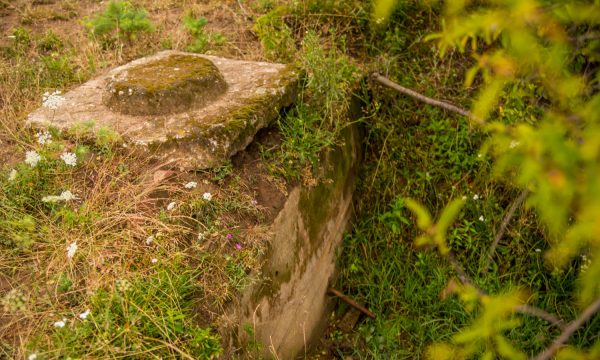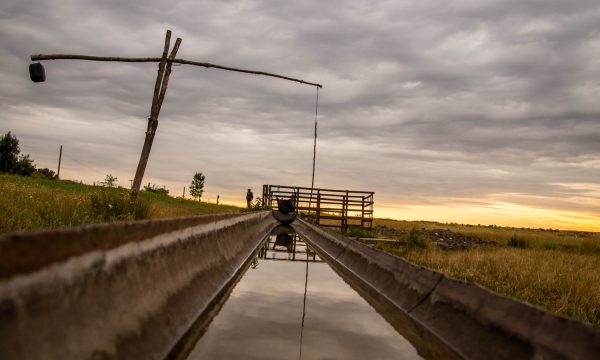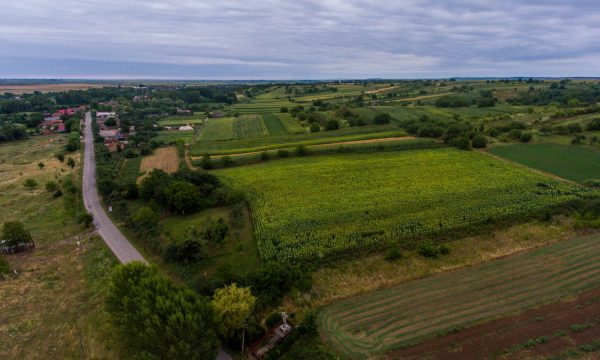Legend
The Saint Ladislaus traditions from Sălacea probably have medieval origins and are continuous with the pre-Reformation folklore traditions, just as in the case of Băile Episcopiei (Hu: Püspökfürdő) from Bihar-county or the Turda (Hu: Torda) region traditions. As it is situated on the northern edge of Bihar-county, its local traditions, prominent among which is the legend of the spring, came into being as an emanation of the Oradea (Hu: Nagyvárad) place of worship.

This local story represents a more archaic layer of the relevant traditions, because according to the local folk tales it was not King Saint Ladislaus himself who sprang the water for his thirsty soldiers, but his horseshoe broke up the lively water. As the earliest local record of this legend mentions, “The well of Saint Ladislaus is at the side of Cserge Hill. King Saint Ladislaus was riding his horse, and his horse’s foot slipped into the ground. A well-spring was created in that place. Soldiers dug it up and baptized it. The king’s soldiers liked this well the most.” This spring, with its shrubs, still exists on the southern edge of Sălacea, just a few meters from the main road, leading to Otomani (Hu: Ottomány.) In the vicinity of the border of Sălacea the word lives in the local folk traditions that St. Ladislaus’ Hill (Hu: Szent László halma, Nagyhalom) was piled up by the sacred king’s soldiers, using their mess-tins.

Natural Heritage
The municipality of Sălacea is positioned on the Ier (Hu: Ér) plain, in the northern side of Bihor county. The hills of Sălacea and Săcueni (Hu: Székelyhíd) and the Ier river surround this region with their swampy territory. Paraphrasing Endre Ady: “Ér is a big, sleepy, strange ditch, / puddle, reeds, bulrush lives here”. This landscape influenced the locals’ lifestyle too. The ancient way of life of the area was given by the marshland, the floodplain forests and the alder marshes. Unfortunately, in the second half of the 20th century, the former lush vegetation areas were drained to create areas for cultivation. The number of wetlands has decreased, most of the plains are now dominated by agricultural land. Two Natura 2000 conservation areas of community importance have been created to protect the remaining natural values. One of them is the Câmpia Ierului (Hu: Érmellék) site (ROSCI0021), with the most important habitats, such as lime liking mud and marshes, forest-hardwood remains, with nominating species such as the fescue (Festuca vaginata) and the small pasque flower (Pulsatilla pratensis), and the native (endemic) species of sand dike.

The Hungarian narrow-leafed ash (Fraxinus angustifolia ssp. Pannonica) is a characteristic tree of the hardwood forests, and plays a significant role in the development of the flatland alder marshes. Occasionally, there are also small thistles (Cirsium brachycephalum) and sandy iris (Iris humilis ssp. Arenaria). The other area for conserving 26 species of birds is Câmpia Nirului – Valea Ierului (Hu: Nyírség-Érmellék) Natura 2000 site (ROSPA0016), a special bird protection area. The saker falcon (falco cherrug), the European roller (coracias garrulus), the red-footed falcon (falco vespertinus) are in need of protection globally, whereas the red heron (Ardea purpurea) and the Botaurus stellaris are protected at the European level. In the whole of Western Romania there is only a single population of the stone curlew (Burkinus oedicnemus). A large population of white storks (Ciconia ciconia) is found here. Of the fishes, the only European representative of the Umbridae is the very special European mudminnow (Umbra krameri), which particularly likes marshy areas. The nature conservation area can be easily reached from the village, and on your way you can find many vineyards, which hint to the main craft of the villagers.
